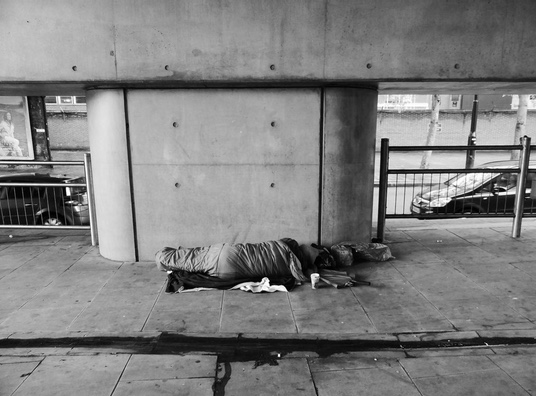
The bodies of two people, a man and a woman who were believed to be homeless, were found on East 26th Street near Superior Avenue and it barely made the local nightly news. By all appearances the man and woman froze to death in an open space, their bodies covered by snow.
While the story did make the national news, it didn’t spark a sense of shame or outrage in regards as to how we care for the most vulnerable amongst us. And for that we should be ashamed. Our social safety net is dangerously frayed, and is set to become even more tattered as new policies that favor the rich are being proposed in Washington.
The number of homeless is rising in America.
Granted, we have homeless shelters that function with a more or less degree of efficacy. But for various reasons, every individual doesn’t want to reside in one of these facilities, even when the temperature dips below freezing. It could be that this couple was so attached to each other they feared being separated, even for one night. Maybe all they had to cling onto was each other.
Certainly mental health issues came into play in this tragic incident. But the number of people who would rather hold onto whatever shred of independence they possess by not going into a shelter is a figure we may never know. Nonetheless, there has to be an alternative between dehumanizing shelters and freezing to death.
Years ago I wrote about a place called “Camelot.” It was a place not far from downtown Cleveland where the destitute, the down and out, the homeless, and the mentally ill — those we oftentimes see wandering our streets blank-eyed — could (and did) go that was all their own. To them, it meant a degree of independence.
Camelot existed on Chester at 53rd Street. The once handsome three-story building, made of large glazed white tiles, was formerly home to the famous Hough Bakery, but it had sat abandoned for years until homeless squatters quietly moved into it back in the late 80s.
I’d heard whispered rumors about it for years, but didn’t know the location, or if it really existed outside of someone’s mind. A number of things struck me about the name: Obviously someone had a wry sense of wit and irony, not to mention they were somewhat literate. And I wasn’t sure if the name was supposed to evoke the magical castle and court associated with the legendary King Arthur, or of the almost mystical era associated with the Kennedy clan. Either way the name denoted a special place with a special meaning for a somewhat disparate group of people.
We tend to think of street people only in terms of how they appear in the here and now, forgetting they were not always this way. Like everyone else, at some earlier point in their lives they had dreams, aspirations, hopes, and maybe even stable lives, similar to the rest of us. But Camelot was torn down somewhere around 2003.
My question is, can there be someplace between a homeless shelter and disaster, somewhere that people can reside and maintain some degree of control over their lives? Perhaps a place in the country where they can grow some crops in the spring and summer, and shelter from the cold in the winter — without the heavy, oftentimes oppressive, hand of government weighing down on them? Just a question.

From CoolCleveland correspondent Mansfield B. Frazier mansfieldfATgmail.com. Frazier’s From Behind The Wall: Commentary on Crime, Punishment, Race and the Underclass by a Prison Inmate is available in hardback. Snag your copy and have it signed by the author at http://NeighborhoodSolutionsInc.com